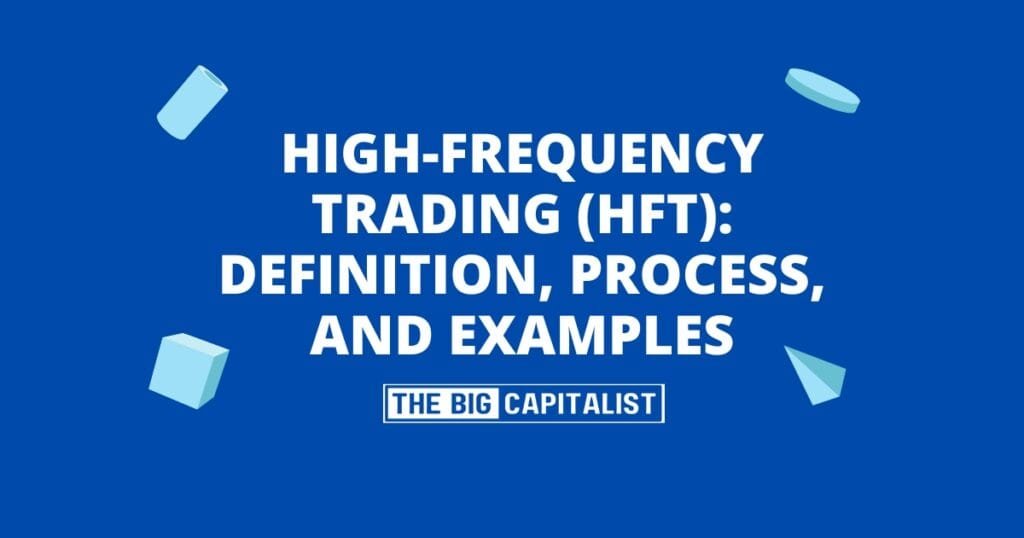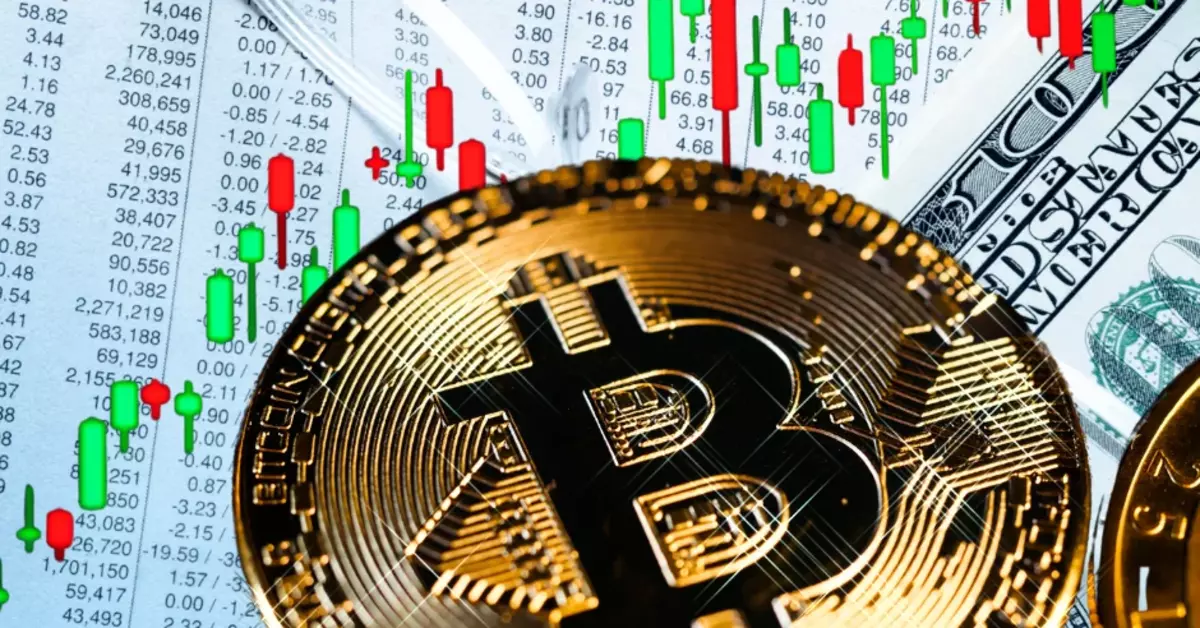High-Frequency Trading (HFT) is a buzzword in the financial world. It’s a form of algorithmic trading that’s characterized by high speeds and high turnover rates.
But what exactly is HFT? How does it work? And what are some real-world examples?
This article aims to answer these questions. We’ll delve into the definition, process, and examples of HFT. We’ll also touch on related concepts like quantitative and algorithmic trading.
Whether you’re a finance professional, an investor, or just curious about the financial markets, this article will provide valuable insights.
So, let’s dive into the fast-paced world of High-Frequency Trading.
What is High Frequency Trading (HFT)?
High Frequency Trading (HFT) represents a cutting-edge segment of the trading world. It uses powerful algorithms to execute trades at lightning speeds. These algorithms scan multiple markets, seeking tiny price differences.
The main goal of HFT is to exploit market inefficiencies. Profits come from minuscule price discrepancies that occur momentarily. The trades happen in fractions of a second, often unnoticeable by human traders.
HFT is a type of algorithmic trading. It leverages extensive quantitative analysis. The strategies are complex and often involve proprietary technology.
A key characteristic of HFT is its high order-to-trade ratio. This means a vast number of orders are placed, but only a few are executed. It reflects the strategy of flooding the market with orders to capture the best prices.
Another hallmark of HFT is its significant role in electronic trading environments. These systems are designed to reduce human intervention. As a result, the market sees a blend of speed and efficiency unseen in traditional trading settings.
The Process Behind High-Frequency Trading
High-Frequency Trading involves a sequence of meticulously timed steps. The process starts with data collection from diverse financial markets. Every tick of the market feeds into sophisticated models.
These models then analyze data in real-time, generating trading signals. The algorithms act on these signals instantly to place orders. This automatic execution is the core of HFT operations.
Once trades are executed, systems immediately move to risk management. Constant monitoring of positions helps avoid any undue exposure. Adjustments are made on-the-fly to maintain an optimal portfolio balance.
Finally, HFT firms continually refine their strategies. This involves backtesting algorithms and integrating new market insights. The cyclical process ensures that the trading strategies remain effective and competitive.
Key Components of HFT Systems
HFT systems hinge on several essential components. First, data feed handlers process incoming information at remarkable speed. They ensure that no valuable market data is missed.
Next, the core trading algorithms evaluate market conditions. These algorithms are the brain, formulating rapid decisions based on pre-programmed logic.
Lastly, order execution systems ensure trades occur within microseconds. This component must align perfectly with the network infrastructure. Delays or inefficiencies can erode potential profits in high-frequency settings.
The Role of Algorithms and Quantitative Analysis
Algorithms form the backbone of HFT. They are created using complex quantitative models. These models rely on statistical methods to forecast market behaviors.
Quantitative analysis aids in understanding intricate market dynamics. It transforms raw data into actionable insights. This rigorous approach minimizes emotional interference in decision-making.
Additionally, machine learning and AI are emerging in HFT circles. These technologies refine algorithms, allowing them to adapt and learn from market fluctuations. The amalgamation of quantitative tools and algorithms drives HFT’s success in modern markets.
Importance of Speed and Low Latency
In HFT, speed reigns supreme. The ability to execute trades faster than competitors defines success. Speed leads to capturing fleeting market opportunities.
Low latency is a pivotal part of maintaining rapid trade execution. It refers to the delay between order placement and execution. The goal is to minimize this delay to microsecond levels.
Many HFT firms employ co-location services. By placing servers near exchange data centers, transmission times are reduced. This proximity ensures firms remain ahead in the high-speed trading race.
Examples of High Frequency Trading Strategies
High-Frequency Trading employs various strategies tailored to exploit market conditions. Each strategy relies on speed and data-driven algorithms. These strategies aim to capitalize on small, fleeting opportunities within the market.
One common approach is market making, which involves placing both buy and sell orders. This strategy provides liquidity and earns profits from the bid-ask spread. Market makers constantly adjust their positions in response to market moves.
Arbitrage strategies involve capturing price differences across markets. These strategies find discrepancies in the price of identical or similar instruments. Efficient algorithms seize these opportunities within microseconds.
Momentum trading focuses on riding the wave of price trends. Traders invest based on the belief that current trends will continue. This technique leverages rapid data analysis to detect and profit from short-term price shifts.
Market Making
Market making is a prominent strategy in HFT. These traders provide liquidity to markets by continuously placing buy and sell orders.
They earn profits from the bid-ask spread. While the gains per trade are small, they add up over numerous transactions.
Arbitrage Strategies
Arbitrage involves exploiting price disparities. HFT firms search for differences in the price of identical assets across markets.
When discrepancies are found, trades are executed nearly instantaneously. The goal is to lock in a risk-free profit from the price differential.
Momentum Trading
Momentum trading relies on the speed of change in price trends. HFT algorithms detect early signals of trend formation.
They capitalize on the notion that price trends will extend. Once the momentum slows, positions are quickly unwound to secure profits.
Advantages and Disadvantages of HFT
High-Frequency Trading offers several benefits but also presents notable drawbacks. On the positive side, HFT boosts market efficiency. It achieves this by swiftly adjusting prices to reflect new information.
However, the rapid pace can foster instability. Critics argue HFT contributes to market volatility, with sharp movements and potential for flash crashes. It also raises concerns about fairness in the financial arena. Retail investors may struggle to compete with HFT’s speed.
Moreover, the need for advanced technology represents a significant barrier to entry. This requirement confines participation to well-funded firms, limiting diversity in market players.
Impact on Market Liquidity and Volatility
HFT enhances market liquidity by providing constant buy and sell orders. This activity can narrow spreads and improve price discovery.
Conversely, it can also heighten volatility. Quick, large trades may exacerbate price swings, increasing risks for all market participants.
Regulatory and Ethical Considerations
Regulation aims to ensure HFT operates fairly and transparently. Measures like the Volcker Rule address potential excesses and systemic risks.
Ethically, there’s debate over HFT’s impact on equal opportunity in trading. Ensuring fairness and integrity remains a priority for regulators and market participants.
The Future of High Frequency Trading
High-Frequency Trading will likely evolve with continued technological innovation. Advancements will drive changes in speed and efficiency.
The landscape will also shift due to regulatory updates. Balancing innovation with oversight will shape the trading environment.
Technological Advancements and AI
Technology will push HFT to new levels. AI and machine learning models will further refine algorithms.
These improvements might increase predictive accuracy. Enhanced systems will optimize trades, capitalizing on fleeting market opportunities.
Regulatory Landscape and Market Evolution
Regulations will adapt to the fast pace of HFT. New rules may emerge to mitigate risks and ensure fair play.
Consequently, markets will need to evolve. A balanced approach will be necessary to support innovation while safeguarding investors.
Conclusion
High-Frequency Trading remains a pivotal part of modern financial markets. Its complex systems and rapid execution offer unique opportunities and challenges.
Balancing technological progress with ethical and regulatory considerations will be key. As HFT evolves, understanding its impact is crucial for all market participants.
High Frequency Trading FAQs
What Is HFT vs. Regular Trading?
HFT uses ultra-fast algorithms to execute trades in microseconds, while regular trading operates on slower, human-paced timeframes.
Does HFT Increase Market Volatility?
It often boosts liquidity but can trigger sudden price swings if many algorithms react simultaneously.
















